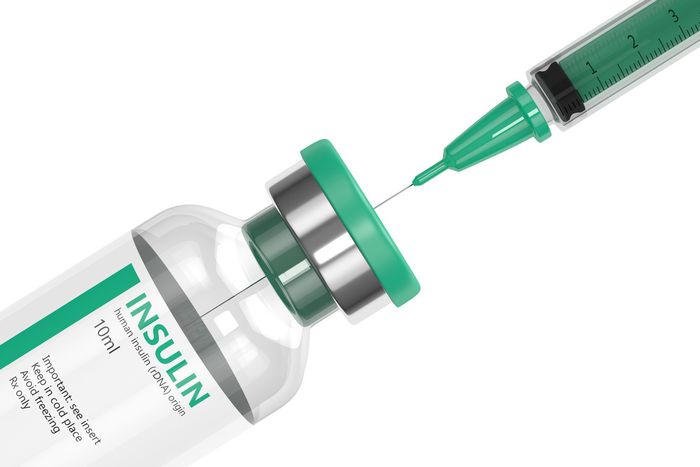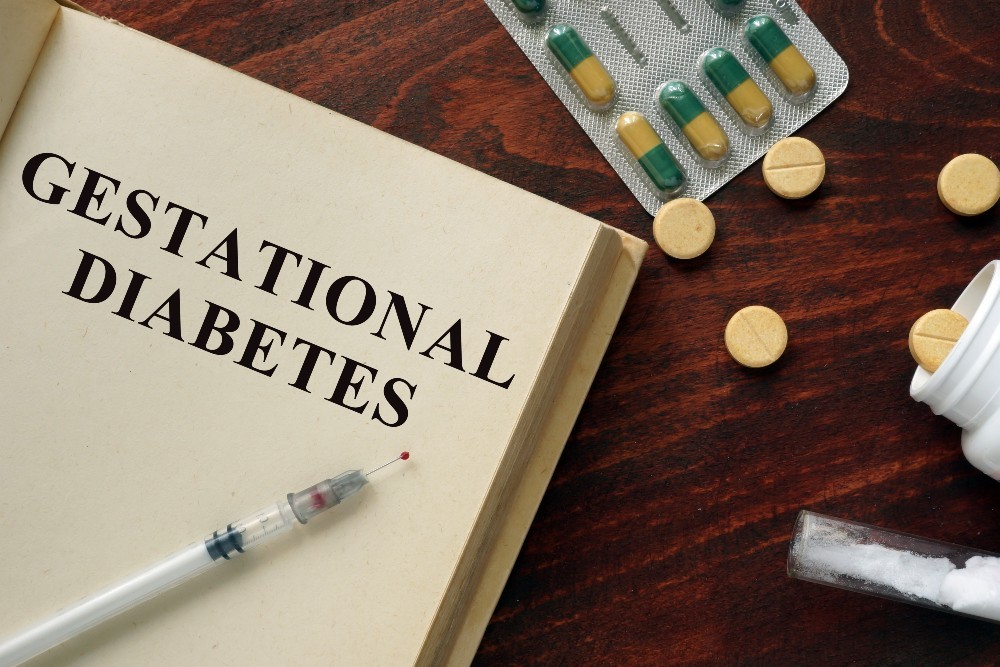In the intricate web of human health, diabetes stands as a formidable adversary, affecting millions worldwide. In contrast, the management of diabetes is a well-trodden path for many. According to data collected by the World Health Organisation (WHO) of 108 countries between 2000 and 2016, there were more than 71 lakh deaths due to diabetes complications. The specter of uncontrolled diabetes looms ominously, posing countless challenges for those grappling with this condition. This blog delves into the depths of uncontrolled diabetes, unraveling the intricacies of what it entails, exploring its causes, and shedding light on the effects of uncontrolled diabetes can have on both short and long-term health. Join us on this journey as we navigate through the landscape of uncontrolled diabetes, understanding the gravity of its impact and seeking insights into its multifaceted nature.

What is Uncontrolled Diabetes?
Uncontrolled diabetes is when you either have high sugar levels or frequent low sugar levels. The prevalence of high blood sugar is called hyperglycemia. If you have a low sugar level, it is called hypoglycemia. Uncontrolled diabetes invites many uncontrolled diabetes complications.
Uncontrolled diabetes type 2 is when your fasting sugar reading is below 70 mg/dL or higher than 125 mg/dL. Measuring postprandial blood sugar uncontrolled diabetes is when you have postprandial blood above 180 mg/dL. The higher the value of the blood sugar, the more severe the uncontrolled diabetes complications. Uncontrolled hyperglycemia is when you have blood sugar above 200 mg/dL or 240 mg/dL.
Read More: How to Reverse Prediabetes Naturally?

Causes of Uncontrolled Diabetes

There are a few causes of uncontrolled diabetes:
- Diabetes going undiagnosed for a sustained period
- Irresponsible behavior by individuals by ignoring preliminary symptoms of diabetes
- The present set of treatments seems to be ineffective
- The individual fails to comply with the treatment
One should always avoid this stage as the consequences of uncontrolled diabetes are severe and can be life-threatening.
Effects of Uncontrolled Diabetes

The simple definition of uncontrolled diabetes is described above. It is either when blood sugar is below 70 mg/dL or above 180 mg/dL. Diabetes is always to be kept in control as there are short-term and long-term adverse effects of uncontrolled diabetes.
High diabetes levels can harm your nerves, blood vessels, linings and other vital organs. Having diabetes means there is a shortage of insulin production. Or insulin cannot be adequately utilized by the body. The result of both cases is glucose cannot move to cells from blood. High blood sugar starts damaging nerves and organs, which gives rise to numerous uncontrolled diabetes complications.
For effective uncontrolled diabetes management, knowing all types of complications is essential. Uncontrolled diabetes complications are majorly divided into two varieties:
Microvascular:
Microvascular complications of uncontrolled diabetes cause damage to smaller blood vessels. Nerves and blood vessels servicing the eyes, kidneys, and whole nervous system are at risk. These uncontrolled diabetes type 2 complications are also called diabetic retinopathy (eyes), diabetic nephropathy (kidneys), and diabetic neuropathy (nerves).
Macrovascular:
In this kind of uncontrolled diabetes complications, blood sugar causes damage to large organs. Macrovascular complications lead to strokes, heart ailments, peripheral artery disease, etc.
Other consequences of uncontrolled diabetes can be a fall in immunity, delay in blood clotting, dental diseases, and pregnancy complications.
Read More: Is Type 2 Diabetes Curable?
Symptoms of Uncontrolled Diabetes

There are both short-term and long-term symptoms of uncontrolled diabetes. Some of the common symptoms are listed below. However, do remember everyone’s body response is different. They may encounter different and varied levels of these uncontrolled type 2 diabetes symptoms.
Frequent Urination
Frequent urination or polyuria is a common diabetes symptom. In this, you urinate multiple times in regular time intervals. These uncontrolled diabetes complications may lead to extreme dehydration and kidney dysfunction. Polyuria happens due to high blood glucose. Usually, the kidneys excrete urine after absorbing sugar. This sugar is sent to the bloodstream through which it reaches your cells.
But when you have uncontrolled diabetes, the kidneys try to release extra glucose out of your body. The excess glucose in the kidneys acts as an osmole. An osmole is a substance that alters fluid movement. The osmotic effect attracts more fluid to the kidneys, which results in frequent urination.
Polyuria also happens as a side effect of taking diuretic medications and excessive caffeinated drinks.
Excessive Thirst
The medical name for excessive thirst is polydipsia. This is another one of the common early symptoms of uncontrolled diabetes. This symptom is a consequence of the above symptom. When your body is losing excessive fluid, your body automatically signals you to replenish.
When fluid levels in your body go down, there is an abrupt rise in blood sugar levels. As of now, the overall fluid volume of the body is low. Polydipsia also causes headaches, nausea, dizziness, general discomfort, bad breath and also fainting.
Drinking water and electrolytes can be the first-hand treatment but will not provide total relief. The ultimate solution to these uncontrolled diabetes complications is blood sugar control.
Fatigue and Tiredness
Fatigue is another of the common symptoms of uncontrolled diabetes. Several factors are responsible for this, namely:
- Depression
- Excessive overweight
- Loss of fluids
- Underutilisation of glucose in the body
- Insomnia
- Stress
Fatigue and tiredness disrupt your daily functioning. It also depreciates your quality of life socially and emotionally.
Foot infections
One of the symptoms of long term uncontrolled diabetes is foot infections. This mostly happens in those patients whose high diabetes levels go undiagnosed for a long time. Uncontrolled diabetes weakens the body’s immunity and even makes minor infections impact you badly.
Diabetes swollen feet and diabetic foot syndrome are two common uncontrolled diabetes complications. High sugar levels damage the lining of blood vessels. This disrupts blood circulation, especially in the lower parts of the body. Inadequate blood flow in feet upsurges infection growth and reduces white blood cells (WBCs). The WBCs provide immunity in our body.
Reduction in blood flow also affects your healing rate, and the formation of new tissues is delayed. When you have uncontrolled diabetes, wound sores can fester, causing severe tissue infections. This also can lead to gangrene. The symptoms of uncontrolled diabetes feet are:
- Pain and cramps
- Skin discoloration
- Burning sensation
- Poor nail growth
- Feet ulcer
Increase in Hunger
The medical term for this uncontrolled diabetes complications is polyphagia. Excessive hunger is the third most common symptom after excessive thirst and urination.
Uncontrolled diabetes prevents glucose from entering your cells for conversion into energy. The lack of energy signals the brain, making you crave more food. Consuming more food will not cure this complication. Instead, it will worsen your state of diabetes. This is because you already have high sugar levels, and consuming more food will heighten it further.
Blurred Vision
Blurriness in vision is next on the list of uncontrolled diabetes complications. It occurs both in case of uncontrolled hyperglycemia (high sugar)and hypoglycemia (low sugar).
Blood sugar spikes eventually cause fluid buildup in the eyes, distorting the eye lens shape. If the uncontrolled diabetes blood glucose levels persist, it may take up to six weeks to treat the visual distortions. In some cases, uncontrolled hyperglycemia attacks damage the retina permanently, causing partial blindness.
In the case of hypoglycemia, vision gets blurred due to a hypoglycemic attack on the brain. High sugar levels do vascular damage to small blood vessels, causing bleeding and fluid leak into the retina. This complication is also called diabetic retinopathy. Due to this, diabetes is among the top causes of blindness in adults in the world.
Sudden Weight Loss
Uncontrolled diabetes type 1 and type 2 both make sugar levels skyrocket. High blood glucose breaks down stored fat and muscle mass for energy. This is because the energy supply through the blood is disturbed. Therefore, weight loss happens.
Loss in muscle mass is at once evident, and so weight loss occurs commonly with uncontrolled diabetes. Through frequent urination, you lose excess water from the body, which also contributes to weight loss.
Hearing Problems
Counting the side effects of uncontrolled diabetes now comes the loss of hearing. Although, exactly why the hearing problems happen is unclear. However, the possibility of nerve damage due to uncontrolled diabetes blood glucose levels is assumed.
As per the data from the ADA (American Diabetes Association), the onset of hearing problems in diabetics is twice as high as in non-diabetics. The hearing loss rate is 30% higher in even prediabetes patients than normal adults. Some also believe uncontrolled sugar levels increase pressure in the cochlea (ear’s microphone), which is filled with fluid.
Disruption in Blood Circulation
Uncontrolled diabetes type 2 over the period helps in the accumulation of fats in blood vessels. This is called plaque.
Plaque damages the blood vessels going to the heart and brain, which causes peripheral artery disorder (PAD). PAD affects many body parts like the lungs, kidneys, digestive tract, skin, etc.
Symptoms of PAD include:
- Nails getting brittle
- Fatigue
- Numbness in hands and limbs
- Hair loss
- Joint pain
- Digestive issues
- Memory loss
- Varicose veins
- Discoloration of skin
- Cramps
- Swelling in different body parts
Skin Diseases
Skin diseases are symptoms of long term uncontrolled diabetes. In some cases, the skin problems are permanent in nature. Other skin diseases heal once the sugar levels start getting back to normal. Some of the skin diseases are:
Acanthosis Nigricans:
In this uncontrolled diabetes skin disease, skin gets dark and raised in body folds like armpit and groin. Overweight diabetics are more prone to this disorder, and it is linked with increased insulin resistance.
Bullous Diabeticorum:
In this, blisters form in the arms, legs and forearms. These are very painful and an outcome of poor glucose control.
Necrobiosis Lipoidica Diabeticorum:
NLD reasons for uncontrolled diabetes complication. It causes reddish, itchy patches on the skin in the lower body region. NLD is the result of blood vessel damage due to uncontrolled diabetes.
Eruptive Xanthomatosis:
In this, yellow circular enlargements are surrounded by red patch rings on the skin. This disease is more common in males and occurs in the hands, feet, buttocks, etc.
Disseminated Granuloma Annulare:
These uncontrolled diabetes complications are linked to poor glucose control. In this, pink patches with proper borders appear on fingers, hands and feet.
Most of the skin disorders listed above heal when sugar levels go back to normal. What’s needed is a proper nursing diagnosis for uncontrolled diabetes.
Read More: Top 10 Natural Remedies For Diabetes?
Long-Term Effects of Uncontrolled Diabetes
The symptoms of uncontrolled diabetes are severe and only appear when you don’t care for your body. Over time, constant uncontrolled diabetes blood glucose levels can result in long-term irreversible complications. Complications like blindness, strokes, and cardiovascular ailments are of a permanent nature. When sugar levels are to high, i.e. above 300-350 mg/dL, it results in a diabetic coma.
Even uncontrolled diabetes complications like peripheral neuropathy can be cured when treated in the initial stages.
Therefore, uncontrolled diabetes management should be imposed as soon as you diagnose it. Uncontrolled diabetes HbA1c level and sugar level can do irreparable harm to your body. If things aren’t working for you, get immediately in touch with your doctor or diabetologist.
Switch at once to diet for uncontrolled diabetes and lifestyle, which helps you to get back swiftly. You can also connect with our experienced Breathe Well-being healthcare team, who can help you greatly in this regard.
Read More: What is Insulin & How Does It Work?
Conclusion
Uncontrolled diabetes is an alarming state that requires immediate action. The adverse effects of blood sugar do damage that can be permanent and irreversible. Don’t ignore the symptoms at all. Once diagnosed at once, take the medications prescribed and switch to an uncontrolled diabetes diet plan. Severe cases of uncontrolled diabetes result in acid buildup in your body. It is known as diabetes ketoacidosis and is more common in uncontrolled type 1 diabetes. Type 2 diabetes patients face the risk of diabetic coma, heart strokes and kidney damage, which significantly reduces the lifespan of the individual.
FAQs (Frequently Asked Questions)
Although diabetes reduces life expectancy, with proper guidance and lifestyle, this can be reversed. Following a prepared diet for uncontrolled diabetes management. And making small lifestyle modifications like regular workout sessions will help keep blood sugar in a safe range. This will help you live a long life.
The top three uncontrolled diabetes complications are:
Diabetic retinopathy
Diabetic nephropathy
Diabetic neuropathy
The top three signs of uncontrolled diabetes or diabetic emergency are:
Excessive hunger and thirst
Blurry vision
Frequent urination
Uncontrolled diabetes sugar levels above 300-350 mg/dL can result in diabetic coma.
Disclaimer
This site provides educational content; however, it is not a substitute for professional medical guidance. Readers should consult their healthcare professional for personalised guidance. We work hard to provide accurate and helpful information. Your well-being is important to us, and we value your feedback. To learn more, visit our editorial policy page for details on our content guidelines and the content creation process.

 English
English












